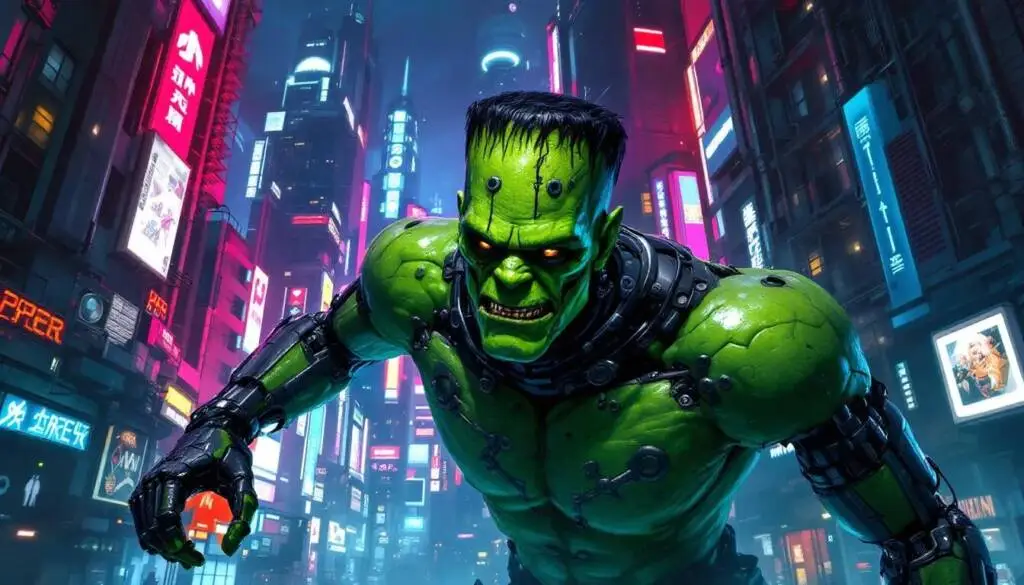Frankenstein’s Monster: An In-Depth Overview
Frankenstein’s Monster is a compelling character from Mary Shelley’s 1818 novel “Frankenstein; or, The Modern Prometheus.” Often incorrectly referred to as “Frankenstein,” the true name belongs to its creator, Victor Frankenstein. The monster delves into profound themes surrounding life, creation, and the ethical dilemmas of scientific exploration.
The Creation of the Monster
Victor Frankenstein is a young scientist who becomes dangerously obsessed with the idea of creating life. His ambition leads him to assemble a creature from body parts collected from graves and cadavers. Using an undisclosed scientific process, he successfully animates the creature, bringing it to life. However, upon seeing the result of his work, Victor is horrified by its appearance and abandons it, setting off a chain of tragic events.
Appearance
The monster is described as large and grotesque, standing at an abnormal height with yellow skin that barely conceals muscles and arteries. Its eyes are often described as “watery” and “dull,” which contributes to its horrific appearance. This physical form evokes fear and revulsion in everyone it encounters, including its creator, reflecting the theme of outer appearances versus inner humanity.
Intelligence and Emotion
Despite its horrifying looks, Frankenstein’s Monster possesses significant intelligence and emotional depth. It is capable of understanding language and expressing feelings. Throughout the novel, the creature experiences profound loneliness, rejection, and a desperate longing for companionship. This emotional complexity turns the monster into a tragic figure, navigating a world that shuns it based solely on appearance. Its desire for acceptance raises the question of what it truly means to be human, blurring the line between monster and man.
Major Themes
The story of Frankenstein’s Monster explores several key themes:
The Dangers of Unchecked Ambition: Victor’s obsessive quest for knowledge and power leads to catastrophic consequences for both himself and the creature he creates. His failure to consider the moral implications of his actions serves as a cautionary tale.
The Quest for Knowledge: The narrative probes the limits of scientific exploration and the ethical boundaries of creation. It invites readers to ponder the responsibilities that come with such power.
The Nature of Humanity: The novel challenges the reader to reflect on what defines humanity. Is it our appearance, our actions, or our capacity for emotion and connection?
Consequences of Isolation: Both Victor and the monster experience profound isolation. Victor’s self-imposed alienation from society and the monster’s rejection illuminate the destructive effects of loneliness and the need for companionship.
Cultural Impact
Frankenstein’s Monster has transcended literature, becoming an iconic figure in popular culture. It has inspired numerous adaptations in film, theater, and other media. The character often symbolizes the consequences of “playing God,” raising important ethical questions related to scientific advancement. Movies, television shows, and plays frequently reference the themes from Shelley’s original work, demonstrating its enduring relevance.
Conclusion
Overall, Frankenstein’s Monster serves as a thought-provoking commentary on the complexities of creation, ethical responsibility, and the human condition. Through its intricate layers of meaning, Mary Shelley’s novel continues to resonate with contemporary audiences, highlighting the dangers inherent in ambition and the quest for knowledge. The story invites us to consider the depths of compassion and the importance of empathy in a world that often judges based on superficial traits.
Disclaimer:
The information provided in this blog is for informational purposes only and should not be considered professional advice. While we strive to provide accurate and up-to-date information, we make no guarantees about the completeness or reliability of the content. Any actions you take based on the information in this blog are at your own risk. Additionally, this blog may contain affiliate links, and we may earn a commission from purchases made through those links.



